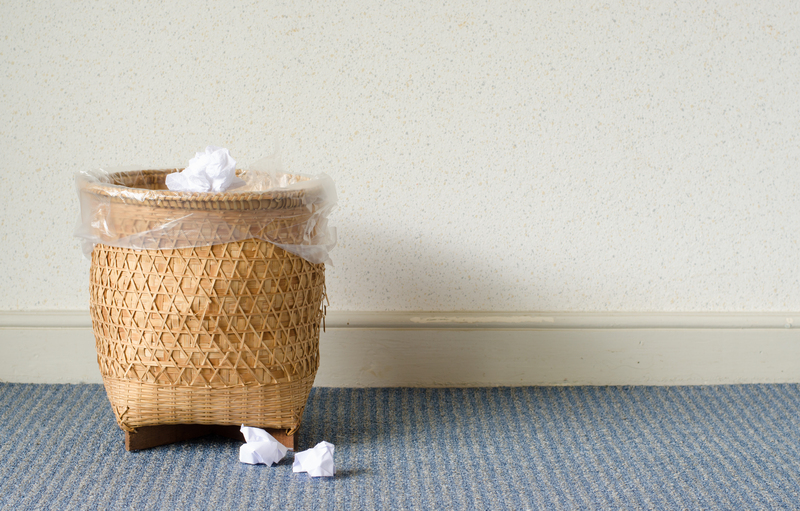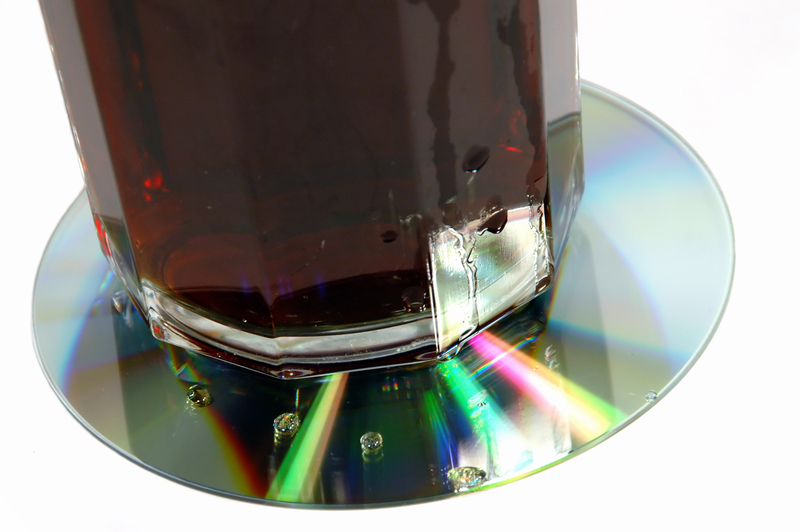Tackling Microplastic Pollution with New Solutions
Microplastic pollution may not be immediately visible, but it is a pressing environmental challenge affecting ecosystems, wildlife, and human health globally. As society becomes more aware of the scale and impact of microplastics, scientists, innovators, policymakers, and communities are racing to develop new and effective approaches to combat this crisis. In this comprehensive article, we will explore the roots of microplastic contamination, examine its far-reaching consequences, and highlight the latest solutions for controlling and reducing microplastic pollutants--from innovative clean-up technologies to policy changes and everyday actions.

Understanding Microplastic Pollution
What Are Microplastics?
Microplastics are tiny plastic particles less than five millimeters (5mm) in size. They are generally classified as either primary microplastics--manufactured for specific products such as cosmetic exfoliants and industrial abrasives--or secondary microplastics, which result from the breakdown of larger plastic waste over time due to environmental factors like sunlight and wave action.
Main Sources of Microplastic Contamination
- Laundry and textiles: Synthetic fabrics such as polyester release thousands of tiny fibers during washing cycles, which escape wastewater treatment plants and enter rivers and oceans.
- Personal care products: Some toothpastes and exfoliating products use microbeads for their scrubbing effect, which are washed down the drain.
- Plastic waste breakdown: Improperly discarded plastic items like bags, bottles, and packaging degrade into microplastics due to exposure to sunlight and weathering.
- Tire abrasion: Tire wear produces extremely fine particles, contributing significantly to roadway runoff and waterway pollution.
- Paints and industrial sources: Ship paints and industrial coatings fragment over time, releasing particles into the environment.
The Global Scale of Microplastic Pollution
New research shows that microplastic particles are found in nearly every corner of the earth--from the depths of the ocean to Arctic snow and even in the air we breathe and the water we drink. According to various environmental studies:
- Over 8 million tons of plastic waste enter the oceans every year, a portion of which rapidly degrades into microplastics.
- Recent studies have discovered microplastics in 90% of table salt samples, bottled water, tap water, and even rainwater.
- Microplastics have been detected in hundreds of marine and terrestrial species, including fish, birds, mammals, and invertebrates.
Health and Environmental Impacts of Microplastics
The stealthy nature of microplastic pollution makes it particularly dangerous. Once in the environment, microplastic particles act as magnets for toxic chemicals, pathogens, and heavy metals. These contaminated fragments are consumed by aquatic organisms and enter the food web, potentially impacting human health.
Impact on Marine Life
- Physical harm: Microplastics can cause injury and blockages when ingested by small organisms, fish, and birds.
- Chemical toxicity: Many microplastics contain harmful additives (like phthalates and flame retardants) and absorb pollutants from water, resulting in increased health risks for marine creatures.
- Ecosystem disruption: The accumulation of microscopic plastics disrupts natural food chains and can alter reproductive and growth patterns in aquatic wildlife.
Potential Risks to Human Health
Humans are exposed to microplastics primarily through food (especially seafood), drinking water, and even air. Some studies suggest:
- Inflammation and toxicity: Ingested microplastics may cause inflammation in the digestive tract and act as a conduit for harmful chemicals.
- Unknown long-term effects: The full spectrum of health impacts remains under investigation, but early research indicates potential risks to hormone balance, immune response, and organ function.
New Solutions for Fighting Microplastic Pollution
With microplastics posing such serious threats, tackling the problem requires multi-pronged approaches. Here are some of the most promising strategies and technological innovations focused on solving the microplastic crisis:
Innovative Filtration Systems
- Advanced washing machine filters: Many new home and industrial washing machines are being equipped with fine filters that capture synthetic fibers before they reach wastewater. Retrofitting existing machines, or using standalone filter devices, can significantly reduce fiber pollution at the source.
- Municipal and industrial wastewater treatment: Enhanced filtration technologies, such as membrane bioreactors and rapid sand filters, are being deployed to trap microplastics during the water treatment process. Some facilities are now experimenting with magnetic extraction and electrocoagulation to improve removal rates.
- Stormwater interceptors: Specially designed mesh baskets and filters installed in road drains and gutters trap tire microplastics, plastic litter, and debris before they reach waterways.
Biotechnological Approaches to Microplastic Removal
- Plastic-eating microbes and enzymes: Researchers are developing genetically engineered microorganisms and novel enzymes capable of breaking down microplastics into less harmful components. Ideonella sakaiensis is a notable example of a bacterium that produces an enzyme able to digest PET plastics.
- Algae-based remediation: Some projects are experimenting with certain types of algae, which can aggregate microplastics, making them easier to collect or filter out of bodies of water.
Cleanup Technologies and Devices
- Floating barriers and skimmers: Innovative floating barriers and large-scale skimming systems are deployed in rivers, estuaries, and coastal zones to capture plastic and microplastic particles before they enter the open ocean. Devices like the "Interceptor" by The Ocean Cleanup target river outflows--a major conduit for plastic pollution.
- Drone and robot collectors: AI-powered water drones and autonomous robots are now being tested for continuous monitoring and removal of microplastics from lakes and reservoirs.
Sustainable Materials and Product Redesign
- Biodegradable alternatives: Manufacturers are investing in bioplastics and fully degradable polymers that break down safely in nature, reducing the formation of secondary microplastics.
- Eco-friendly textiles: Emerging fiber technologies include garments made from natural polymers, or synthetic fibers designed to shed less during washing, thus minimizing microplastic release at the source.
- Plastic-free packaging: A global shift towards reusable, recyclable, or compostable packaging materials in consumer goods is gaining momentum, driven by consumer demand and regulatory pressure.
Legislation and Policy Solutions
- Bans on microbeads: Many nations--including the US, UK, India, and parts of the EU--have implemented bans on microbeads in cosmetics and personal care products.
- Regulations on textiles and tires: Some regions are developing standards to minimize microplastic shedding from clothing and vehicle tires during production and usage.
- Plastics Extended Producer Responsibility (EPR): Governments are introducing EPR laws to make manufacturers accountable for the full life cycle of their plastic products, including their potential to pollute as microplastics.
- Labeling and transparency: Policy tools such as mandatory labeling for microfiber pollution encourage consumers to make sustainable choices and push industries towards greener alternatives.
Community Actions and Consumer Choices
In addition to top-down policies and technology, individuals can play a major role in tackling microplastic pollution. Here's how:
- Choosing natural fabrics: Opting for clothing made from organic cotton, wool, or linen can reduce your contribution to microfiber pollution.
- Washing with care: Washing clothes at lower temperatures and using gentle cycles helps minimize fiber shedding. Devices like microfiber-catching laundry bags or washing balls can further reduce microplastic release.
- Supporting plastic-free brands: Purchasing products with minimal or biodegradable packaging can lower demand for single-use plastics.
- Proper disposal and recycling: Safely recycling or reusing plastic products, and avoiding litter, prevents larger plastics from breaking down into microplastics.
- Advocacy and education: Spreading awareness about the microplastic issue within communities encourages collective action and increases pressure on industry and government to innovate.
Case Studies: Real-World Success Stories
Pioneering Municipalities
In Paris, pilot programs retrofitting laundry facilities with microfiber filters have seen up to 80% reduction in synthetic fiber release into wastewater. In Stockholm, stormwater microplastic interceptors have successfully reduced plastic inflow into urban waterways.
Corporate Leadership
Major sportswear brands such as Adidas now create shoes and apparel using ocean plastic waste and recycled fibers, in collaboration with environmental organizations. Large retailers have phased out microbeads in their private-label products worldwide.
Grassroots Movements
Community-driven beach cleanups and citizen science projects, such as the global Great Nurdle Hunt, are mapping and collecting plastic pollution hotspots, providing critical data for scientific research and advocacy.

The Road Ahead: A Holistic Approach to Microplastic Pollution
While there is no single silver bullet for eradicating microplastic pollution, the convergence of innovation, regulation, and behavior change offers hope. Future solutions will need to address the entire plastic lifecycle--design, production, use, disposal, and environmental impact. Stakeholders across society must collaborate to:
- Incentivize circular economy models that prioritize reducing, reusing, and recycling plastics.
- Fund research into safe and effective microplastic detection, cleanup, and removal technologies.
- Support education campaigns to change consumer habits and promote alternatives to conventional plastics.
- Pass and enforce laws that limit sources of microplastic contamination.
Conclusion
Tackling microplastic pollution with new solutions is an urgent necessity in today's world. The array of methods being developed--from cutting-edge technology and renewable materials to policy reforms and grassroots action--demonstrate humanity's collective capacity to respond to environmental challenges. By supporting these innovative approaches and making conscious choices in our daily lives, we can all play a part in turning the tide on microplastic waste and ensuring a cleaner, healthier future for both the planet and its people.